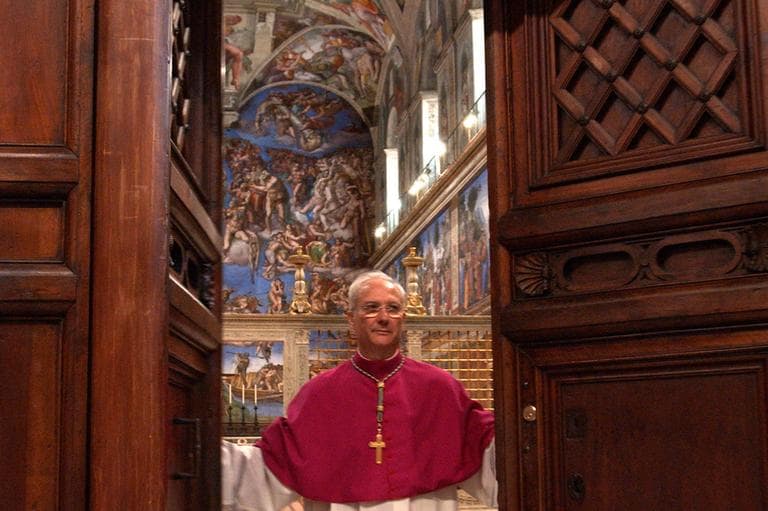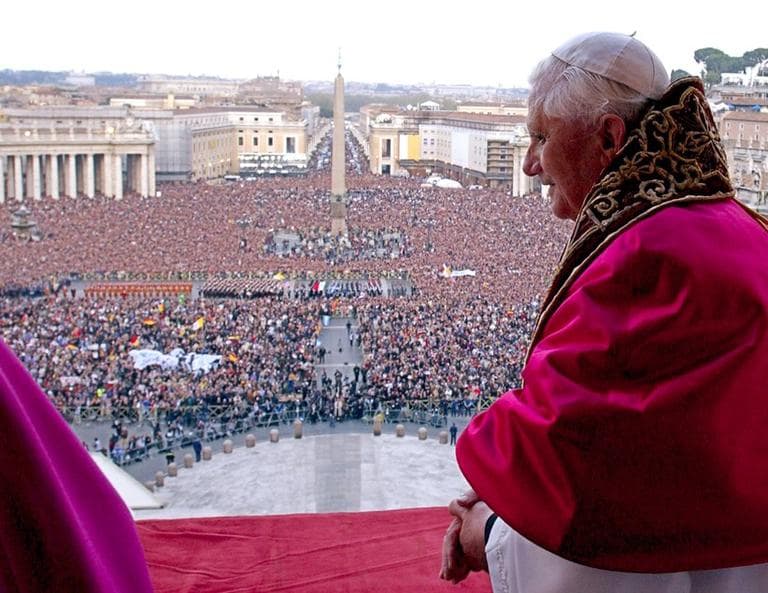Advertisement
Vatican Tour Guides Lose Their Main Attraction
Resume
The Vatican has closed the Sistine Chapel to visitors, to get ready for the conclave that will choose the next pope. That means installing a false floor to cover anti-bugging devices, and putting in a stove where the ballots will be burned.
But for the thousands of tourists who visit the Vatican Museums every day, it means missing out on the main attraction - the very last stop on the visitor route (a long trek) through the museums.
"I say, ‘I’m really sorry we can’t get you in.’ And they’re bummed. They’re pretty depressed about it."
Brandon Shaw
Brandon Shaw, an American-EU citizen who speaks six languages, has been giving tours of the Vatican since around the time of the last conclave eight years ago. He's co-owner of the travel company The Roman Guy.
"The Sistine Chapel is, I would say, one of the wonders of the world," he said. "Michelangelo spent almost 10 years of his life in that one room alone. So it's something that you never forget when you go inside for the first time. It's something you don't really get tired of looking at even if you've been inside 1,500 times."
So what's it like for Vatican tour guides to lose the highlight of their tour?
"I say, 'I'm really sorry we can't get you in.' And they're bummed. They're pretty depressed about it," Shaw said. But, "a lot of people are still going to do a Vatican tour. It's an amazingly massive museum."
The Sistine Chapel being closed also means losing access to the very convenient back exit of the chapel, which leads directly to St. Peter's Square.

Visitors instead have to take the long way around, back through the museums and around the fortified walls of the Vatican, in order to get to the square and St. Peter's Basilica - a detour that can take an hour and a half, Shaw said.
And the area around the Vatican is becoming more difficult to navigate, for tourists and locals alike. Whole areas are cordoned off for tiered stages used by the foreign press. Major networks have commandeered rooftop terraces.
And once the conclave begins, it can be a challenge to make your way through St. Peter's Square. Thousands of people will be holding vigil there to watch for the smoke to pour out of the Sistine Chapel chimney. If the smoke is white, it means a new pope has been chosen successfully, and the church bells will start ringing across Rome.
"From a religious point of view, this can be the highlight of people's lives, to go and actually see a pope come out of the balcony - which I saw eight years ago," he said. "It's a pretty awesome event when you see the white smoke come up, and you know that within 45 minutes, the pope's going to actually come out and you're going to meet him for the first time."
- Daily Beast: Pope Fever Grips Rome
Would you want to be a tourist at the Vatican right now? Or would you steer clear of the chaos? Let us know on our Facebook page.
Guest:
- Brandon Shaw, authorized Vatican tour guide and co-owner of the travel company The Roman Guy.
This segment aired on March 6, 2013.